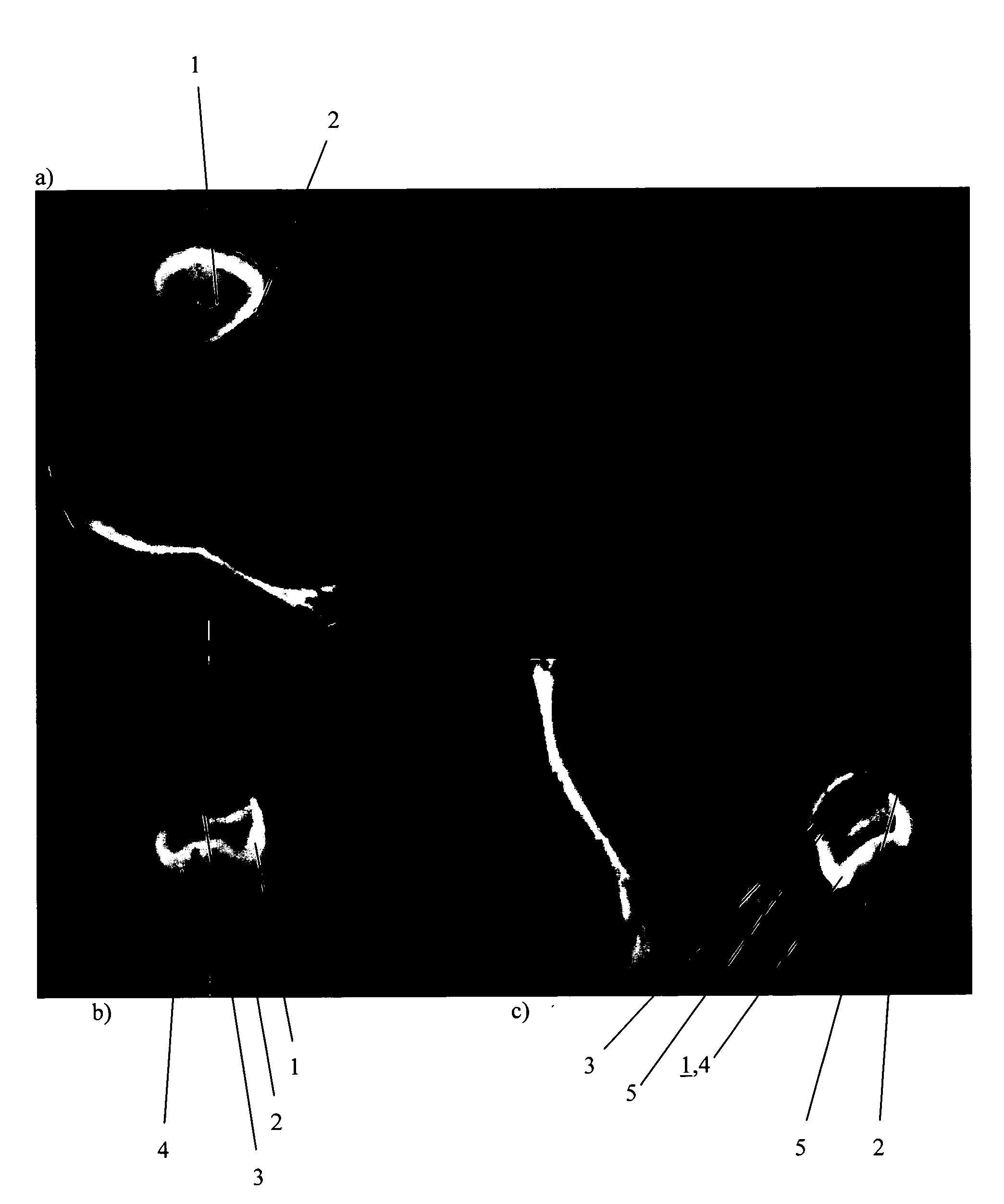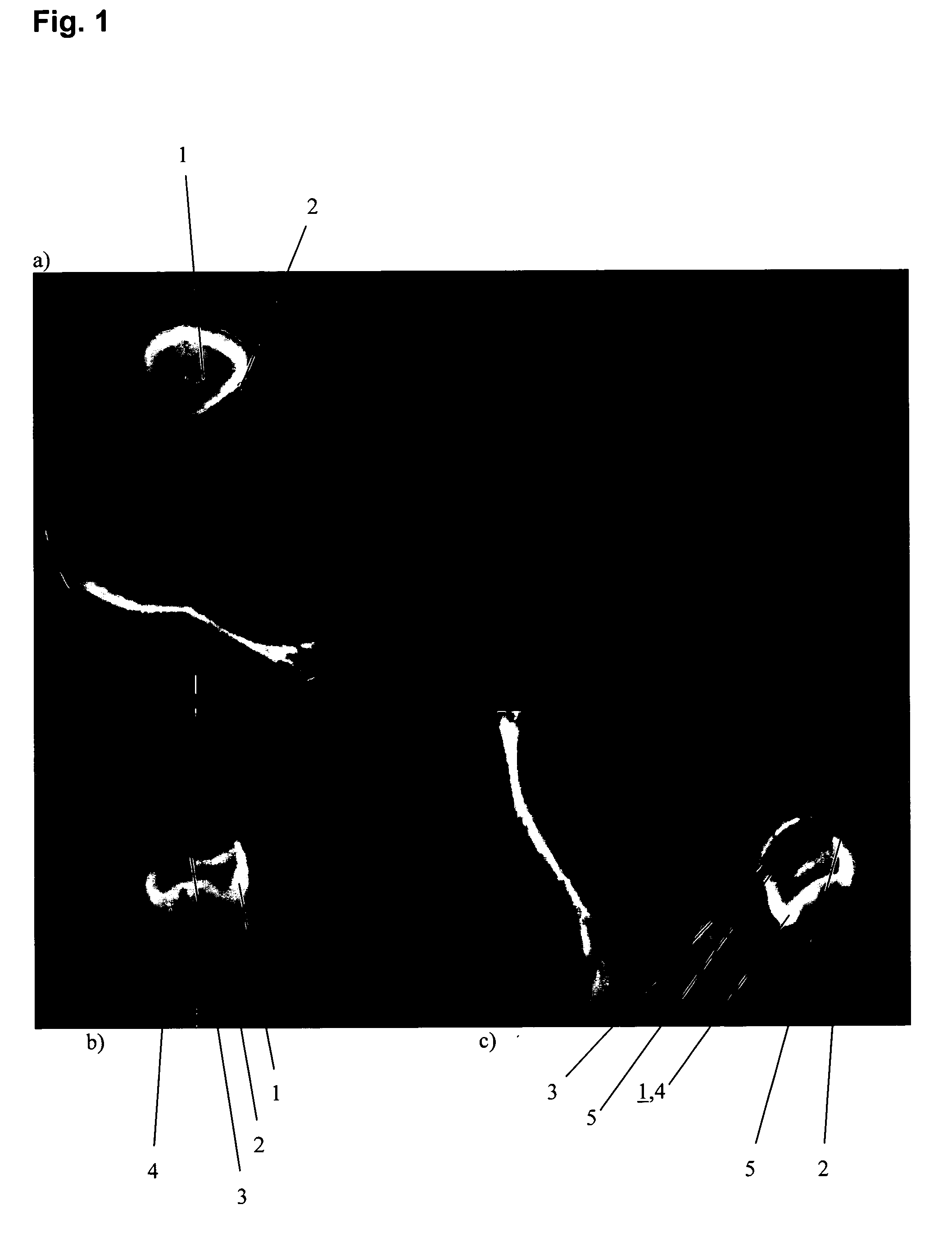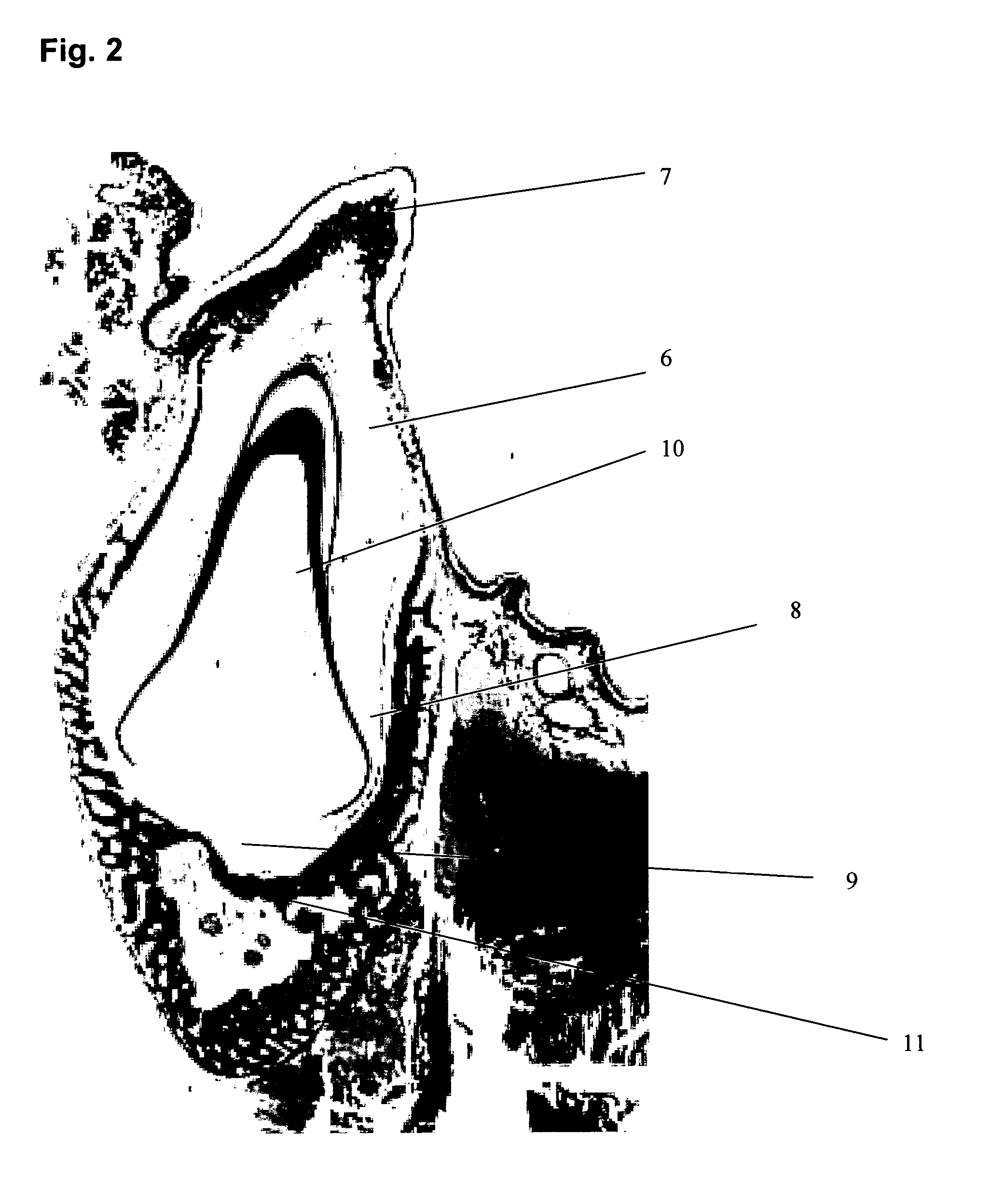Method for isolating stem cells and stem cells derived from a pad-like tissue of teeth
a stem cell and tissue technology, applied in the field of isolating stem cells and stem cells derived from pad-like tissue of teeth, can solve the problems of difficult cell isolation, limited source material availability, and difficult cell acquisition, and achieve the effect of easy operation
- Summary
- Abstract
- Description
- Claims
- Application Information
AI Technical Summary
Benefits of technology
Problems solved by technology
Method used
Image
Examples
Embodiment Construction
[0044]FIG. 1 represents a CT-Scan (CT=computed tomography) of a developing, unerupted upper tooth. The axial view a) shows the occlusal side of a developing tooth 1. That is, the coronary part including mucosa above the tooth 1 and operculum. The circumferential portion of the dental follicle 2 (lateral follicle) can also be observed in this representation. In frontal view b) and sagittal view c) of the tooth 1 a pad-like tissue 3 at the apical side (upper side in this representations) of the tooth 1 can be observed. The occlusal portion of the dental follicle 2 is located underneath the crown 4 of the tooth 1 diametrically opposed to the pad-like tissue 3. The pad-like tissue 3 according to the invention is situated above an imaginary line drawn between the roots 5 that are at the beginning of formation in this stage of tooth development.
[0045]FIG. 2 represents a sagittal section through a developing unerupted human tooth 6. At the occlusal side of the tooth 6 the operculum 7 incl...
PUM
| Property | Measurement | Unit |
|---|---|---|
| time of | aaaaa | aaaaa |
| cell structure | aaaaa | aaaaa |
| size | aaaaa | aaaaa |
Abstract
Description
Claims
Application Information
 Login to View More
Login to View More - R&D
- Intellectual Property
- Life Sciences
- Materials
- Tech Scout
- Unparalleled Data Quality
- Higher Quality Content
- 60% Fewer Hallucinations
Browse by: Latest US Patents, China's latest patents, Technical Efficacy Thesaurus, Application Domain, Technology Topic, Popular Technical Reports.
© 2025 PatSnap. All rights reserved.Legal|Privacy policy|Modern Slavery Act Transparency Statement|Sitemap|About US| Contact US: help@patsnap.com



